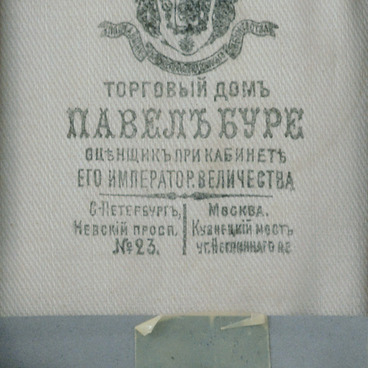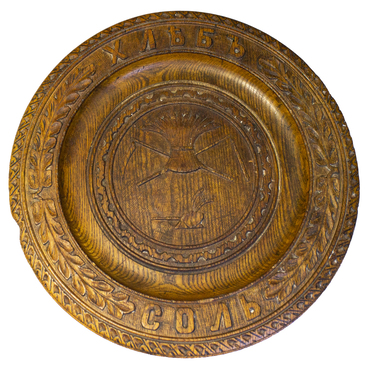The history of a patephone began in 1914, when the English company “Barnett Samuel and Son” produced portable gramophone under the proprietary name “Dulcephon”. The devices were sold under the “Decca” brand name.
The word “patephone” emerged in Russia. It originated from the French company “Pathe”, which was the first to supply such devices to the Russian market. Patephone, designed and patented by Pathe brothers, differed from other devices, produced by competitors, most particularly in its method of forming sound grooves — vertical, not lateral as on other records. It means that in the first models of “Pathe” phonographs playback proceeds from the center to the edge of the gramophone record, but not vice versa. Eventually, this innovation has to be abandoned due to the large amount of ready-to-use gramophone records, which had “from-edge” playback. By that time, such technology was a standard in music recording.
After the October Revolution in 1917, small private manufactures of gramophones and patephones were nationalized, and their property was transferred to state ownership. Patephones became extremely popular in the USSR in the 1930s–the 1940s. Production was arranged at many factories.
In patephones, a spring-driven motor was used as a drive, which was started by a special handle. The sound was amplified with a shank, which was located inside the patephone, not outside, as it was in gramophone. One spring cycle was enough for playback of only one side of the gramophone record. Each side lasted for about three minutes.
The patephone’s soundbox consisted of a metal needle, fixed with a special pivot and an acoustic membrane. The sound quality largely depended on a needle worn-out state. Replacement needles of different sizes was sold in special tin boxes. Although patephone had a very loud sound, its quality was rather low: very harsh with large distortion.
Portable patephone displayed at the exposition was purchased specially for the museum from Oryol citizen — Nina Kunashik in 1982. It was made in form of a suitcase, when it was folded it could be carried with a handle. Patephone body was decorated with brown leatherette. The inner side of the case bears the trademark of the manufacturing factory — “Molotovsky Pathephone Factory”. The city of Perm was named Molotov from 1940 until 1957.
The word “patephone” emerged in Russia. It originated from the French company “Pathe”, which was the first to supply such devices to the Russian market. Patephone, designed and patented by Pathe brothers, differed from other devices, produced by competitors, most particularly in its method of forming sound grooves — vertical, not lateral as on other records. It means that in the first models of “Pathe” phonographs playback proceeds from the center to the edge of the gramophone record, but not vice versa. Eventually, this innovation has to be abandoned due to the large amount of ready-to-use gramophone records, which had “from-edge” playback. By that time, such technology was a standard in music recording.
After the October Revolution in 1917, small private manufactures of gramophones and patephones were nationalized, and their property was transferred to state ownership. Patephones became extremely popular in the USSR in the 1930s–the 1940s. Production was arranged at many factories.
In patephones, a spring-driven motor was used as a drive, which was started by a special handle. The sound was amplified with a shank, which was located inside the patephone, not outside, as it was in gramophone. One spring cycle was enough for playback of only one side of the gramophone record. Each side lasted for about three minutes.
The patephone’s soundbox consisted of a metal needle, fixed with a special pivot and an acoustic membrane. The sound quality largely depended on a needle worn-out state. Replacement needles of different sizes was sold in special tin boxes. Although patephone had a very loud sound, its quality was rather low: very harsh with large distortion.
Portable patephone displayed at the exposition was purchased specially for the museum from Oryol citizen — Nina Kunashik in 1982. It was made in form of a suitcase, when it was folded it could be carried with a handle. Patephone body was decorated with brown leatherette. The inner side of the case bears the trademark of the manufacturing factory — “Molotovsky Pathephone Factory”. The city of Perm was named Molotov from 1940 until 1957.



